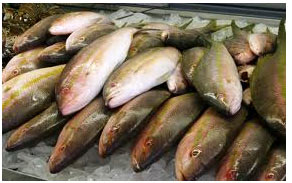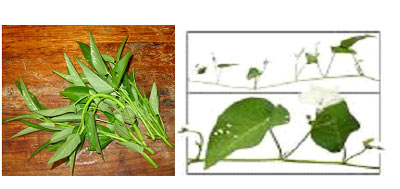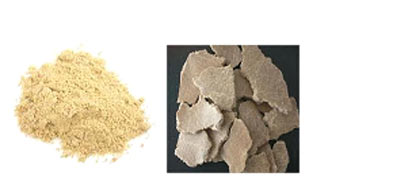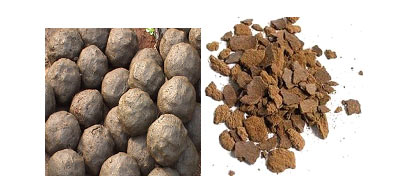Time-7.30 AM to 9AM and 4.30 PM to 7 PM
Mobile:-+91-9437290258
Teach Me This Much
Sustainable Fisheries

1.Kalama leaves or Swamp cabberage (Ipomoea aquatic) leaves as feed for prawn
Procedure-Ipomoea leaves grow in ponds and are locally called as KALAMA leaves. These leaves look like small betel leaves. Freshly plucked Ipomoea leaves are cut into small pieces and are floated on the pond water surface. Prawns are attracted to these leaves and eat with interest.
Indications - Although Ipomoea grown in ponds, spread in ponds very fast, but can be used as good nutriceuticals for prawn

2.Hing (Asa foetida) as fish feed additives
Procedure-Readymade fish feed is prepared by mixing broken rice, rice bran and mustard oil cake. Equal quantity of broken rice, rice bran and mustard oil cake are taken and mixed together. Previously, mustard oil cake is soaked in water for 3 hours. To a 5 kg mixture of above 1-2 gm of hing or hengu water is added and small boluses are prepared. These boluses are spread over the fish pond. Fish get attracted to the feed and eat.
Indications - Hing increases appetite and digestive power of fish. It also acts as germicide inside the gut of fish and there by prevent diseases.

3.A cheap fish feed
Procedure-Equal quantity of rice bran and mustard oil cake powder are taken and mixed thoroughly. To this mixture, equal quantities of fresh cow dung are added and boluses are prepared .These boluses are spread of the ponds water surface as fish feed.
Indications - Cow dung also serves as feed for fishes as it contains some undigested feed material. Cow dung increases growth of plankton in the pond which serves as feed. In place of rice bran one can use wasted boiled rice from kitchen.

4.Fermented feed for fish
Procedure-Farmers use rice, gur (Molasses), rice water and intestinal part, liver of dead animals for fish food. They take the liver of the dead animal and grates into small pieces and mix with equal quantity of rice, rice water and little amount of molasses and put in an earthen pot allow 5-7 days to ferment. After 7 days these fermented products are used as fish food.
Indications - fermented foods work as growth promoting factors for prawn as well as other fishes in ponds.
1.Selection of soil for constructing a fish pond
Soil selection is an important factor. There are some simple tests which farmers can do themselves to know the quality of the soil, where the fish pond is desired to be constructed. These tests are
a. Soil squeeze method- This test is conducted by taking a handful of soil and adding a little of water into it. Then the wet soil is squeezed between the palms and after sometime, the palm is opened. If the squeezed soil remains squeezed and not falling apart, then the soil is fit for constructing a pond.
b.Ground water test- A narrow small pit of approximately 3 feet deep is dug in the plot where pond is desired to be constructed. In the evening hour, the mouth of the pit is covered with a plate of leaves. Next morning the plate is taken out and the bottom of the pit is examined. If there is presence of water or detectable moisture, then the soil is judged as suitable for constructing a pond.
c.Water permeability test-A narrow pit of 3 feet deep is made in the ground. In the evening the pit is filled with water. Next morning, the water level in the pit is observed. Generally in the next morning, water is reduced. Again the pit is filled with water and the mouth is covered with a plate made from leaves. Next morning the plate is removed and the water level in the pit is observed. If the water level remains same, then the soil is fit for constructing a fish pond. If water level is reduced, then it is understood that, the soil is unable to retain water, so unsuitable for constructing a fish pond.
2.Preventing seepage of water from ponds
Procedure-If there is seepage of water from pond through the mud bond, then ten ton of cowdung per hector of pond is added to the pondwater.This helps preventing seepage of water through the mud bonds.
3.Deweeding fish ponds
Procedure-Fish ponds should not have weeds. These weeds eat away nutrition meant for fish. To do deweeding, before monsoon, 20 kg of Mahua oil cake is spread over the pond water.Mahua or Mahula oil cake destroys weeds and also kills pests present in the pond. This treatment with Mahua oil cake increases fish growth and harvest.
4.Pond water management
Procedure-Fish farmers of south Odisha use a traditional method to manage the salinity and oxygen contents of fish pond effectively. They collect the stem of banana plants and cut into pieces and allowed to float on the pond water. This increases the PH of the pond water and there by Oxygen content of the pond water is also increased.
More in Pathshala…
 Home
Home